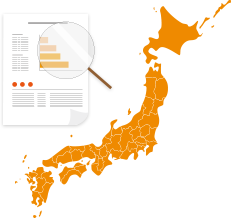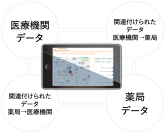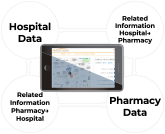Museum
History of Wholesalers
Traces the history of drug distribution, which has supported the development of medical society, and throws a light on the role of the wholesalers
The Meiji government promulgated a health care system in 1874 and approved guidelines regarding the establishment of medical education based on Western medicine, the establishment of a modern pharmacist system, and the preparation of a medical system with separate pharmacy and clinic functions
In terms of pharmaceuticals, the government regulated commercial drugs sold without verification of any special effects, and produced the Japanese Pharmacopoeia, which became the accepted standard for drug formulation. In 1889, the Drug Sales and Drug Handling Regulations established the basis for a modern pharmaceutical system, which regulated pharmacists, druggists, drug manufacturers, and drug handlers.
The distribution of Western drugs based on accurate medical knowledge was essential to the development of Western medicine, and during this period, many companies that started out as pharmacists and druggists established the foundations of business that are today’s pharmaceutical wholesalers(Oroshi).
The drug manufacturing industry became established in Japan with the Japan’s entry into the First World War. With the participation in the war, Western medicine supply imports from Germany were halted, and this had a severe impact on drug supplies. To ensure its own supply of Western medicines, the government established a temporary drug manufacturing department, disclosed manufacturing methods, issued subsidies to private companies, and nullified German-owned patent rights, thereby greatly promoting the nationalization of new drugs.
Reference materials: Doshomachi, a Town of Drugs (Doshomachi Resource Preservation Society)
55 Years of the Drug Wholesaling Industry (Federation of Japan Pharmaceutical Wholesalers Association)
History of Clinical Drugs (Hiroshi Amano, Yakuji Nippo)
History of the Pharmaceutical Industry in Japan (Japanese Society of History of Pharmacy, Ed.; Yakuji Nippo)
Company histories of companies mentioned
Traces the history of drug distribution, which has supported the development of medical society, and throws a light on the role of the wholesalers

信頼性・カバレッジ・即時性の高い医薬品販売データ

EnTalkは「En」データシリーズを一定数ご購入いただいたお客様にご提供する、各界の著名な方々がタイムリーな情報をお伝えする
ウェブセミナーの年間シリーズです。
エンサイスのメインデータである医薬品販売データは、全国の医薬品卸企業のご協力を得て地域別、医薬品別、梱包単位別に日々集計されています。データのカバー率は99%超と極めて高い水準にあります。
院外処方箋の流れを独自調査により集計し、データの分析と可視化を実現したサービスです。

全国1万6千名のMSのご協力により、院外処方箋の流れに関する調査データを独自ネットワークを活用して集計、高度にメンテナンスされた分析情報はMCを通して視覚化された画面でご覧になれます。

医薬品販売データを活用し、分析を行う頻度の高いデータの「見える化をデザインしたシリーズ」です。視覚化することにより、的確な行動を促します。

“EnTalk” is an annual series of webinars where prominent speakers from various fields provide timely information. The customers who have purchased certain number of “En” data are eligible to join.
Encise Database Series, the aggregated daily data with the cooperation of wholesalers nationwide, offer data by region, by drug, and by packaging unit. The data coverage rate is over 99%.
MC is data of out-of-hospital prescription’s flow which was independently accumulated and highly maintained by using our own network with the cooperation of 16,000 MSs nationwide.


Access to variety of prescription drug sales data series designed for “Visualization”. Enable optimal behavior changes.